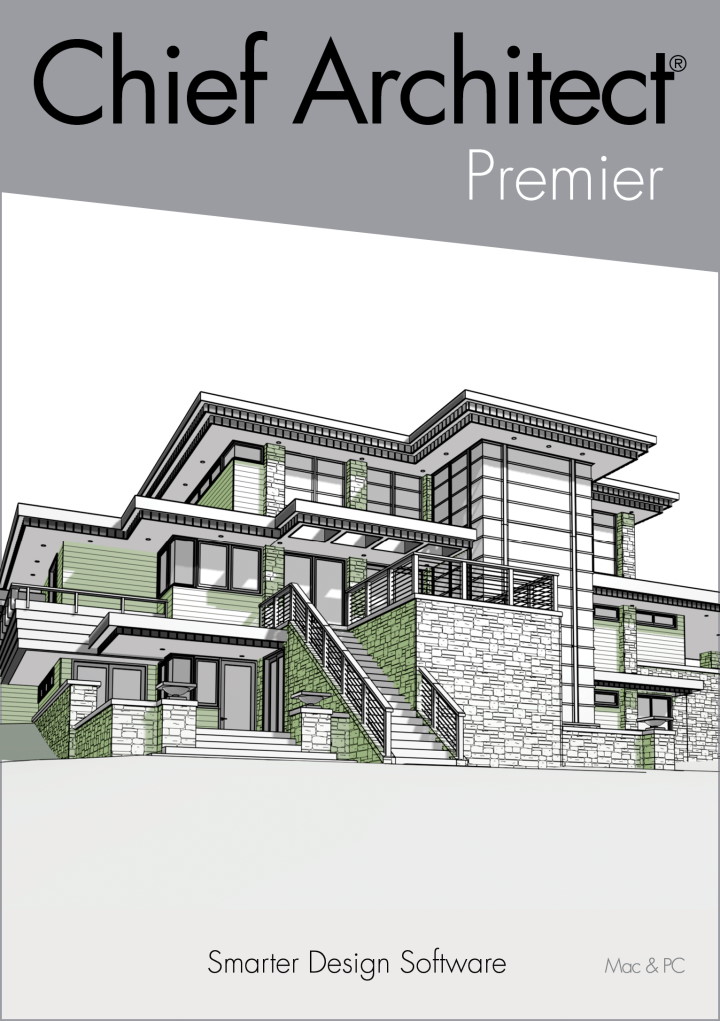The Role of Sustainability and Technology in Modern Architect Practices
Sustainability and modern technology are improving modern design in means you could not expect. By embracing wise advancements and environment-friendly products, architects are not just producing structures; they're crafting settings that enhance our high quality of life.
The Importance of Sustainable Design
Lasting style is necessary not simply for the environment but likewise for improving our lifestyle. You're not just decreasing your carbon footprint; you're producing areas that advertise wellness and health when you welcome lasting design. Picture residing in a home that takes advantage of all-natural light, boosts air top quality, and reduces energy costs. You'll feel much more comfy and linked to nature.
Additionally, sustainable architecture often brings about more powerful communities. When buildings are made with eco-friendly techniques, they can motivate others to do the same, fostering a society of sustainability. You'll observe enhanced residential property values and a greater feeling of pride in your environments.
Last but not least, by focusing on sustainability, you're purchasing the future. You're guaranteeing that future generations appreciate a healthier world and dynamic neighborhoods. So, when you consider your next task, believe about just how sustainable style can raise your life and those around you.
Ingenious Materials Changing Building Practices
As you check out innovative products in architecture, you'll locate that naturally degradable construction products are reshaping exactly how we consider sustainability. Recycled content advancements are giving brand-new life to waste, while wise material technologies improve constructing effectiveness. These innovations not only advertise eco-friendliness but likewise push the limits of layout.
Biodegradable Building Materials
While traditional building and construction materials typically contribute to environmental deterioration, eco-friendly building and construction products are emerging as a practical alternative that changes structure methods. By incorporating biodegradable alternatives right into your styles, you're not just enhancing visual charm; you're also making a positive influence on the world. As you adjust to these ingenious products, you'll discover that they provide longevity and versatility, enabling you to develop frameworks that straighten with modern-day worths of sustainability and obligation.
Recycled Material Developments
Over the last few years, innovative products with high recycled web content have changed building methods, providing engineers interesting brand-new choices - Architect. You can currently integrate products like recycled steel, which not just reduces waste yet likewise flaunts excellent strength. Recycled glass is an additional amazing choice, supplying aesthetic charm while minimizing ecological effect

Smart Product Technologies
Smart material technologies are improving the method you think of developing techniques, offering dynamic services that adjust to transforming problems. These innovative materials, such as self-healing concrete and thermochromic glass, improve building efficiency and sustainability. When harmed-- these innovations are no much longer simply concepts, picture structures that can change to temperature modifications or repair themselves. By integrating wise materials, you can create energy-efficient designs that react to their environment, minimizing general energy intake. The capability to keep an eye on and adjust in real-time streamlines maintenance and prolongs the lifespan of buildings. As you embrace these innovations, you're not simply innovating; you're adding to a more lasting future in style, combining capability with ecological obligation.
The Integration of Smart Technologies in Style
As innovation progresses, integrating clever solutions into building design ends up being essential for producing reliable and sustainable rooms. You can incorporate wise innovations like building monitoring systems, which optimize power usage and enhance passenger convenience.
Incorporating Web of Points (IoT) devices permits for smooth communication among different structure systems, enabling you to make data-driven decisions that improve performance. Smart products that respond to environmental changes can even more improve your layout, giving vibrant solutions to ever-changing problems.
Energy Effectiveness and Renewable Power Solutions
While several architects focus on looks, focusing on power performance and eco-friendly energy solutions is important for sustainable design. You can start by incorporating passive solar layout, which optimizes all-natural light and warmth, lowering dependence on fabricated lights and home heating systems. Use high-performance insulation and energy-efficient windows to reduce energy loss.
Do not neglect concerning sustainable energy systems-- install solar panels or wind generators to create tidy energy on-site. You can also consider including geothermal home heating and cooling systems for a much more sustainable temperature level guideline.
By choosing energy-efficient appliances and lights, you'll not just decrease energy intake however also reduced functional costs for building owners.
Integrating these principles right into your styles not only profits the atmosphere yet additionally enhances the structure's charm and value. Inevitably, your commitment to energy effectiveness and renewable resource will certainly set your tasks apart in an open market.
Water Conservation Approaches in Modern Design
Incorporating water preservation methods into modern-day design is essential for creating lasting structures that minimize environmental effect. You can achieve this by incorporating rainwater harvesting systems, which save and collect rainfall for irrigation and non-potable uses. Executing low-flow components and smart watering systems also minimizes water consumption, making sure reliable usage throughout the structure.
Consider utilizing drought-resistant landscape design, which requires less water and advertises biodiversity. Incorporating permeable paving products permits rainwater to infiltrate the ground, lowering runoff and charging groundwater products.
In addition, mounting greywater recycling systems can repurpose water from sinks and showers for toilet flushing or irrigation, further saving resources.
The Effect of Biophilic Style on Wellness
Biophilic style brings nature inside your home, and you'll see its favorable effects on your health and wellness and happiness. By improving indoor air high quality and linking you with natural environments, these areas can transform your everyday experience. Let's explore how integrating these features can boost your overall well-being.
Nature's Influence on Health
How does our environment form our health? When you include components of nature right into your environments, it can considerably improve your mental and physical health. Biophilic style, which highlights natural light, plants, and natural products, promotes a sense of link to here the outdoors. This link can decrease stress, boost state of mind, and enhance cognitive function. You might locate that areas loaded with greenery encourage creative thinking and over at this website efficiency, making your daily jobs feel more enjoyable. In addition, natural components can assist you feel more kicked back and focused, advertising general well-being. By focusing on nature in your atmosphere, you're not simply enhancing your room; you're likewise supporting your health and wellness and happiness. Accepting biophilic design is an action toward a much healthier lifestyle.
Enhancing Indoor Air Top Quality
While lots of individuals focus on aesthetic appeals and performance in design, enhancing interior air top quality plays a crucial duty in your general wellness. By incorporating biophilic design components, you can boost air high quality naturally. Prioritizing these facets in your style will not just boost your area but additionally advertise a sense of calm and health.
Connection With Natural Elements
When you get in touch with all-natural aspects in your space, you not just improve its aesthetic allure however also substantially improve your well-being. Biophilic layout motivates you to incorporate attributes like plants, all-natural light, and organic products. These aspects create a relaxing environment, reducing stress and anxiety and stress and anxiety. Research reveals that being around nature can improve your state of mind and cognitive function, helping you really feel much more concentrated and efficient. When you invite the outdoors inside, you could notice better air high quality and enhanced convenience. Simple modifications, like including a living wall or huge windows, can exceptionally influence your experience (Architect). Ultimately, incorporating nature right into your environment leads you to a much healthier, better lifestyle, promoting a much deeper connection to the world around you.
Future Patterns in Lasting Architectural Practices
As the globe deals with pushing ecological obstacles, architects are increasingly embracing ingenious techniques to sustainability that redefine exactly how we layout and construct. You'll see a rise in biophilic layout, incorporating nature right into city rooms to boost health and minimize power usage. Smart modern technologies, like AI and IoT, are simplifying power monitoring in structures, enhancing source use, and reducing waste.
Furthermore, modular building is acquiring traction, enabling faster, extra reliable structure processes while decreasing environmental influence. Making use of lasting materials, such as reclaimed timber and recycled steels, is ending up being conventional method. As you explore these fads, expect a shift towards round layout, highlighting the lifecycle of materials and advertising reuse and recycling.
These forward-thinking approaches not just address ecological concerns yet likewise create much healthier, a lot more resilient areas. By remaining informed concerning these patterns, you can help form a sustainable future in architecture.
Regularly Asked Concerns
How Can Sustainability Affect Task Expenses and Budgets?
Sustainability can substantially affect task expenses and budgets. You may find that first investments in environmentally friendly products or innovations lead to lasting savings via energy performance, decreased waste, and possible government incentives, eventually stabilizing the total expenditures.
What Accreditations Exist for Lasting Architecture?
You'll locate several accreditations for lasting architecture, consisting of LEED, BREEAM, and the Living Structure Challenge. These accreditations aid you demonstrate your commitment to sustainability and can boost your task's integrity and interest clients.
Exactly How Does Neighborhood Society Influence Sustainable Style?
Neighborhood society shapes sustainable style by showing area traditions, materials, and values. You'll find that integrating regional aesthetics and methods not only appreciates heritage however additionally boosts his response the functionality and approval of your building tasks.
What Duty Does Customer Education And Learning Play in Lasting Practices?
Customer education and learning's essential for promoting sustainable practices. When you inform clients concerning advantages, prices, and ecological influences, you encourage them to make enlightened choices, cultivating a collaborative approach that boosts the task's total sustainability.

Exactly How Can Architects Gauge the Success of Sustainability Initiatives?
You can measure the success of sustainability efforts by tracking power intake, evaluating material effectiveness, and event comments from customers. Normal audits and comparisons against criteria will assist you fine-tune your strategies and display improvements efficiently.
By integrating wise materials, you can produce energy-efficient styles that respond to their atmosphere, lowering total power intake.While several engineers concentrate on aesthetics, focusing on power performance and eco-friendly power solutions is essential for sustainable design. Biophilic design, which stresses all-natural light, plants, and natural products, promotes a sense of connection to the outdoors. Biophilic design urges you to include attributes like plants, all-natural light, and organic materials. As you discover these fads, anticipate a shift toward circular layout, highlighting the lifecycle of materials and promoting reuse and recycling.